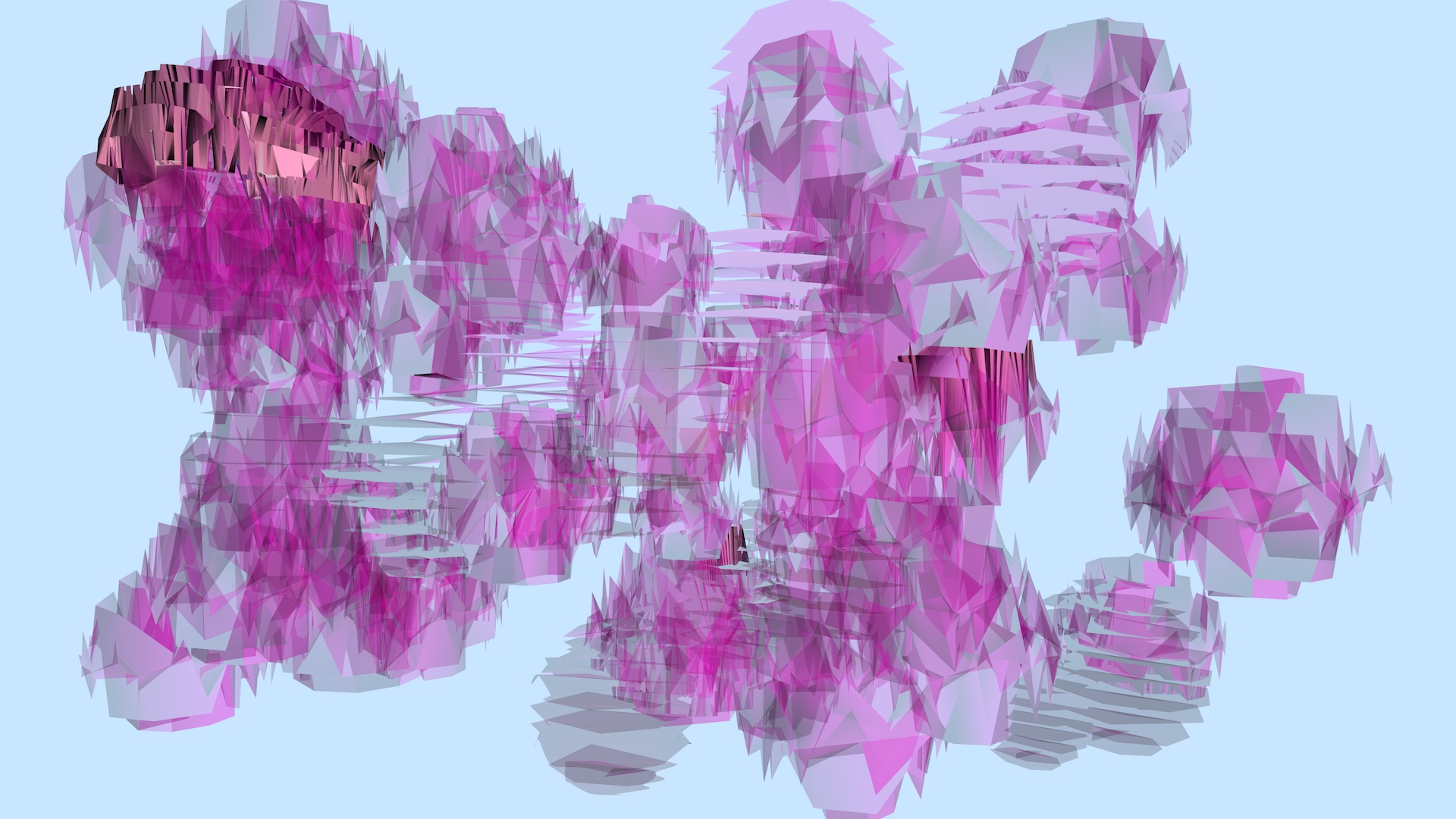Computational Stress
The artwork tells the story of forced computational labour through a series of polygons drawn by connecting vertices of 3D spherical spirals. Each spiral represents my computer's computational cycle of approximately three minutes. Cycle data was collected during 4 particularly abusive coding hours in autumn 2017. The more I force my computer to work for me, the more it struggles against the constraints trying to break out of the ordered shape.
Spoiler alert: the computer never wins.
produced by: Tin Geber
Introduction
Any interaction between the computer and the artist has an inescapable power dynamic — a slave-master relationship, rather than a partnership. In my experiments, I search for ways to give a pretense of a voice to the computer, by letting it manipulate the visual outcome in a fictitious power struggle between user and computer.
"Computational Stress" is a computer program written to draw three-dimensional spirals on the screen. The vertices forming the spiral can be nudged out of their "correct" place — the decision whether to nudge, and by how much, is taken by the computer. The obvious issue is that the computer has no free will — it can say no only if it's programmed to say it. To create a simulacrum of free will, I feed a dataset of CPU usage back to the computer, and let it decide whether to break the spiral or not based on how much it was forced to work for me over a certain period of time:
- if the computer had more time for itself, it will draw a correct shape
- if the computer was forced to work for me, it will rebel by drawing a broken shape
Concept and background research
I have been exploring ways to break away from the self-congratulating concept of "computer as partner" in the field of generative art. While the computer can surprise and expand the artist's capabilities, this surprise is due to lack of knowledge on the artist's side. I see this parallel in Manfred Mohr's work — the truly surprising works are the earliest ones, where Mohr's lack of knowledge brought him to experiment with machines in ways no one ever thought of before. As time progresses, the knowledge gap is reduced and with it, the artist's ability to become surprised by the computer.
I see Mohr's artistic evolution into multidimensional cubes as a gradual, implicit acceptance that digital art needs to find other venues of delight as knowledge about the tools grows.
Technical
The artifact was created entirely in Processing. The most difficult concept to conquer, ironically, wasn't related to programming: it was trigonometric. Understanding how to draw a spiral that traverses the surface of a spherical shape took me deep into uncomfortably unknown territories (and Math Overflow rabbit holes).
This was also the first time I tried to complete an artifact entirely in 3D space. I was surprised by how much light positioning influences the work's look and feel.
Future development
Computational Stress is part of an ongoing exploration of the human-machine relationship (for an earlier example, see "Ask Me How I Feel on the Expanded Interfaces zine). I will continue to explore ways to expose, visualise, and express the tensions and power dynamics of this relationship. The next step will probably utilise machine learning turned inward; a machine that learns about itself.
Self evaluation
The one big thing I wasn't expecting from this project is how difficult it would be to work with shadows in 3D spaces. Proper shadow design through code is GLSL territory, and I was stumped by the difficulty. For the end product, being shadowless, I decided to embrace the '90s computer graphics aesthetics — it was a choice driven by need.































































